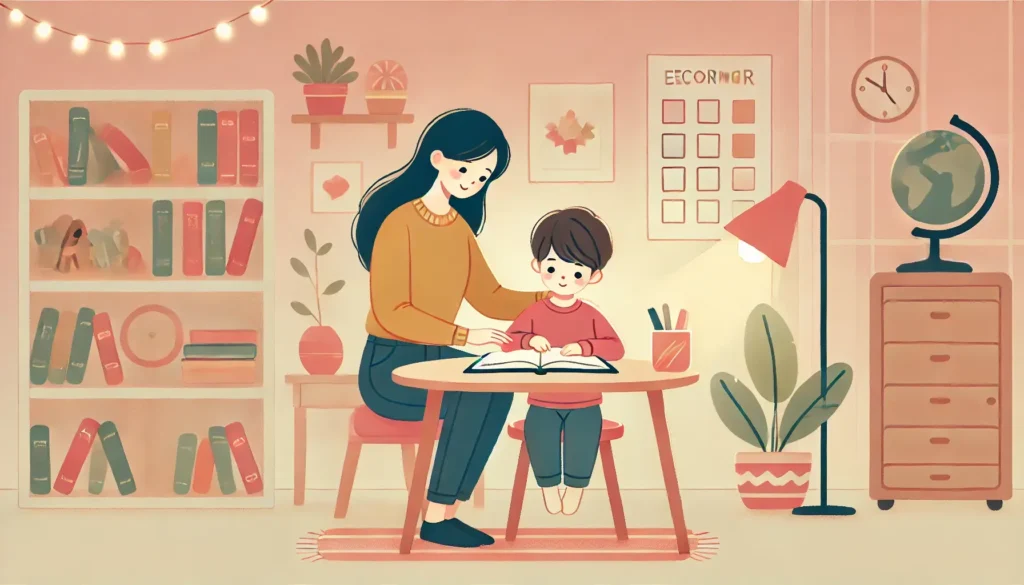1 in 5 children in the United States has a learning disability. That’s roughly 6-7 students in every classroom.
Finding out your child has a learning disability can trigger a mix of emotions – confusion, worry, and maybe guilt. We understand because we’ve helped thousands of parents through similar situations.
Learning disabilities don’t determine your child’s potential. Children with learning disabilities can thrive academically and personally when they have the right support, strategies, and understanding. Many successful entrepreneurs, artists, and scientists have transformed their learning differences into unique strengths.
This guide offers practical steps to help your child overcome learning challenges and build confidence, whether you’re just starting out or looking for better ways to provide support. Together, we’ll explore ways to create an environment where your child can flourish.
Understanding Your Child’s Learning Profile
Your child’s learning profile is a vital first step to provide effective support. Learning disabilities affect between 5% to 15% of school-aged children [1]. Each child experiences these challenges differently.
Types of Learning Disabilities and Their Signs
Children commonly show three main types of learning disabilities: dyslexia (reading difficulties), dysgraphia (writing challenges), and dyscalculia (math-related issues) [2]. These signs might point to a learning disability:
Difficulty with reading and writing
Problems with math concepts
Trouble following directions
Challenges with organization
Memory difficulties
Problems paying attention [3]
Getting Professional Assessment and Diagnosis
A professional assessment gives you a full picture of your child’s specific needs. The detailed evaluation has educational testing, cognitive evaluation, and psychological assessment [4]. This process takes between three to nine hours [5]. Multiple sessions help prevent exhaustion.
Creating a Personalized Support Plan
A clear understanding of your child’s learning profile helps create an Individualized Education Program (IEP). This plan sets specific learning goals and outlines your child’s special education needs [6]. The support plan targets both academic needs and emotional well-being. Studies show that 30% to 50% of children with learning disabilities face emotional or behavioral challenges [7].
Early intervention makes a difference. Quick identification and support of learning challenges give your child the tools to overcome them and succeed academically.
Building a Strong Support System
A strong support network is vital to help your child succeed. Let’s look at ways to build a support system that has educators, medical professionals, and other parents who understand what you’re going through.
Working with Teachers and Educational Specialists
Your child’s progress depends on a solid partnership between general education and special education teachers [8]. All educators involved in your child’s learning should communicate regularly. Both teachers need clear roles and responsibilities. They should use common language and teaching approaches to work together effectively [9].
Finding the Right Therapists and Medical Support
Your child can work with several specialists:
Occupational therapists for fine motor skills
Speech-language therapists for communication
Educational therapists for learning strategies
Clinical psychologists for emotional support [10]
Note that you don’t need to see every specialist right away. Start with one or two main concerns to avoid overwhelming your child [10].
Connecting with Parent Support Groups and Resources
No parent should face this challenge alone [11]. Parents who share similar experiences are a great way to get emotional support and practical advice. Parent to Parent USA offers nationwide support networks [11]. Many schools have special education PTAs where you can meet other families [12].
You can find resources and support groups through local nonprofits and disability organizations. These groups share useful tips about specialized services and daily challenges [13]. You’ll find a community of parents who know exactly what you’re going through and can offer both emotional support and practical solutions.
Developing Daily Learning Strategies
Your child’s learning success begins at home. The right daily strategies can transform your child’s educational experience.
Creating an Effective Home Learning Environment
A dedicated learning space that reduces distractions will help your child focus better. Research shows that a well-laid-out environment helps students learn information better [14]. You can use color-coding for different subjects and keep materials in an organized system [15]. Your child will manage work better with a consistent after-school routine that lets them unwind.
Using Multi-Sensory Learning Techniques
Our experience shows that multi-sensory learning works best for children with learning disabilities. This approach blends multiple senses at once and creates stronger neural pathways for learning [14]. Here’s what we recommend:
Visual aids: Charts, graphs, and color-coded materials
Auditory elements: Verbal instructions, discussions, and audiobooks
Kinesthetic activities: Hands-on materials, movement-based learning, and tactile exercises
Students who take active roles in learning through multi-sensory instruction activate different brain areas. This enhances memory retention and deepens understanding [14].
Implementing Assistive Technologies and Tools
The right assistive technology can lead to remarkable progress in daily learning. Text-to-speech software helps with reading challenges, while speech-recognition programs support writing tasks [16]. Digital planners and organizational apps make it easier to track assignments and deadlines [15].
Math learning improves with specialized calculators and tools that show visual confirmations of concepts [16]. These tools complement learning rather than replace it. They help students work around specific challenges while building core skills. The goal isn’t to eliminate the learning disability but to give your child tools that work around it.
Nurturing Emotional Wellbeing
Your child’s emotional wellbeing matters as much as their academic success. Research indicates about 40% of children with learning disabilities face self-esteem challenges [17]. This makes emotional support a vital part of their developmental experience.
Building Self-Esteem and Confidence
Children with learning disabilities often think they’re not as smart as their peers [17]. They need to understand that a learning disability doesn’t define their intelligence or potential. The best approach focuses on their strengths while acknowledging areas that need support. This balanced perspective helps them develop a realistic self-image and builds confidence.
Managing Frustration and Anxiety
Three times more anxiety exists among children with learning disabilities compared to their peers [18]. Here are some proven strategies that help manage these feelings:
Set up a “calm down” space at home for overwhelming moments
Do deep breathing exercises together
Keep consistent daily routines to reduce uncertainty
Apply problem-solving strategies for challenging situations
Celebrating Progress and Achievements
Small and big victories deserve recognition [19]. Each achievement boosts your child’s confidence. These celebrations motivate them and create positive feedback that encourages more effort [19].
Note that your child’s emotional wellbeing substantially affects their learning experience. A supportive environment helps them feel valued and capable of meeting challenges [20]. Children who see their efforts recognized and appreciated tackle new challenges with confidence and stay motivated.
Conclusion
Supporting a child with learning disabilities takes dedication, patience, and the right approach. Children thrive when parents understand their unique learning profiles, build strong support networks, and use daily strategies that work.
Your child’s experience might feel challenging right now, but learning disabilities don’t define their potential. Professional support, multi-sensory learning techniques, and steady emotional encouragement help your child develop skills needed for academic and personal success.
Celebrate every milestone on this path. Your positive attitude and steadfast dedication make a real difference in your child’s confidence and growth. Focus on their strengths, keep open communication with their support team, and watch them flourish despite the learning obstacles ahead.
FAQs
Q1. What are some effective ways to support a child with a learning disability? Focus on your child’s strengths, develop their social and emotional skills, and create a structured learning environment at home. Implement multi-sensory learning techniques and use assistive technologies to help overcome specific challenges. Regular communication with teachers and specialists is also crucial for your child’s progress.
Q2. How can parents build self-esteem in children with learning disabilities? Help your child understand that having a learning disability doesn’t define their intelligence or potential. Celebrate both small and significant achievements, focus on their strengths while acknowledging areas needing support, and create opportunities for success. This balanced approach fosters confidence and builds a realistic self-image.
Q3. What types of professionals should be involved in supporting a child with learning disabilities? A comprehensive support team may include general and special education teachers, occupational therapists, speech-language therapists, educational therapists, and clinical psychologists. The specific professionals needed will depend on your child’s individual challenges and needs.
Q4. How can parents manage frustration and anxiety in children with learning disabilities? Create a “calm down” space at home, practice deep breathing exercises together, and establish consistent daily routines to reduce uncertainty. Teach problem-solving strategies to tackle challenging situations. Remember that children with learning disabilities are more prone to anxiety, so addressing emotional well-being is crucial.
Q5. What role does assistive technology play in helping children with learning disabilities? Assistive technology can significantly aid children with learning disabilities. Text-to-speech software can help with reading challenges, while speech-recognition programs assist with writing difficulties. Digital planners and organizational apps can help with task management. These tools don’t replace learning but help children work around specific challenges while building essential skills.
Lorem ipsum dolor sit amet, consectetur adipiscing elit. Ut elit tellus, luctus nec ullamcorper mattis, pulvinar dapibus leo.






